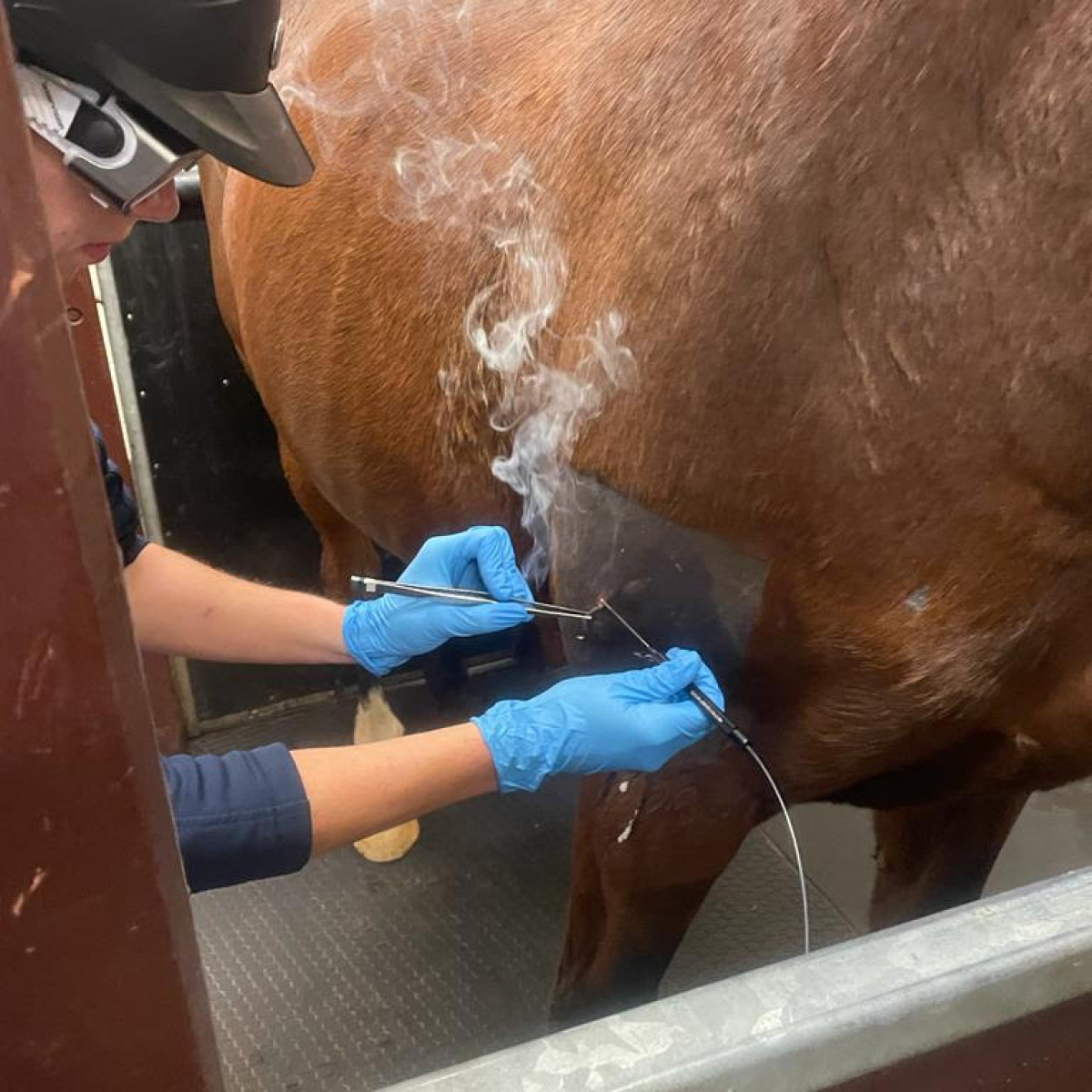Equine Therapy for Trauma Healing: Just How Equines Aid Heal Emotional Wounds
Equine Therapy for Trauma Healing: Just How Equines Aid Heal Emotional Wounds
Blog Article
Laser Treatment in Equine Therapy: A Modern Strategy to Improving Horse Health And Wellness
Laser therapy has emerged as a pivotal strategy in equine treatment, using concentrated light power to cultivate cellular repair and quicken healing from a range of conditions. By promoting mitochondrial activity and enhancing ATP production, laser therapy not only improves blood circulation but likewise gives significant discomfort alleviation.
Recognizing Laser Treatment
Laser therapy, a non-invasive treatment modality, has actually gotten substantial traction in equine medication due to its efficiency in advertising recovery and pain relief. This sophisticated restorative method utilizes focused light power to pass through cells, promoting mobile repair work and regrowth. The underlying device involves the excitement of mobile mitochondria, leading to boosted manufacturing of adenosine triphosphate (ATP), the energy currency of cells. Improved ATP levels speed up cells fixing processes and reduce inflammation, making laser treatment especially reliable for treating musculoskeletal injuries, wounds, and other inflammatory conditions in equines.
There are several sorts of lasers used in equine therapy, each with particular wavelengths and power outcomes customized to various healing demands. Low-level laser therapy (LLLT), likewise referred to as chilly laser treatment, utilizes reduced power degrees to promote cell function without causing thermal damages. High-intensity laser treatment (HILT), on the other hand, uses greater power degrees to achieve much deeper tissue penetration and even more significant restorative results.
Veterinarians utilize various laser gadgets and techniques relying on the problem being treated and the desired depth of cells penetration. Proper training and expertise are important for ensuring the risk-free and effective application of laser therapy, thereby maximizing its healing possibility while decreasing dangers.
Benefits for Horse Health And Wellness


With a solid understanding of just how laser treatment works, it is crucial to explore its countless advantages for equine health. By promoting cellular function, laser treatment promotes faster wound recovery and help in the regrowth of damaged cells.
Moreover, laser therapy has actually been revealed to improve flow, thus boosting blood circulation to influenced locations. Improved circulation guarantees that necessary nutrients and oxygen are provided extra successfully, promoting the recovery procedure. Additionally, laser therapy's anti-inflammatory results assist in reducing swelling and discomfort, which is critical for the general well-being of the steed.
Discomfort management is an additional significant benefit. By launching endorphins and obstructing discomfort signals, laser treatment supplies efficient, non-invasive relief from both intense and persistent pain. This can add to boosted wheelchair and high quality of life for the pet.
Lastly, laser treatment is a non-invasive treatment alternative, reducing the threat of problems related to more invasive treatments. Its flexibility and efficiency make it an important device in modern-day equine vet medicine.
Typical Problems Treated
Horse specialists often run into a selection of problems that can be effectively taken care of via laser treatment. Among the most usual are musculoskeletal concerns, consisting of tendon and tendon injuries. Laser therapy increases the recovery why not try here procedure by enhancing mobile repair work and reducing swelling, which is crucial for injuries such as tendonitis and suspensory tendon desmitis.
Another prevalent problem treated with laser therapy is joint inflammation. Steeds dealing with both acute and chronic joint inflammation take advantage of the anti-inflammatory impacts of laser treatment, which assists to minimize pain and boost joint feature. In addition, laser therapy is employed in the administration of wounds. Whether managing medical incisions or stressful injuries, the modality advertises faster tissue repair and minimizes the risk of infection.
Horse respiratory system conditions, such as recurrent airway obstruction (RAO), additionally react favorably to laser therapy. The anti-inflammatory homes of the treatment aid in reducing respiratory tract inflammation, hence enhancing breathing feature. Additionally, laser therapy is beneficial in treating unguis troubles, including laminitis and abscesses. By improving flow and lowering discomfort, it sustains quicker healing.
Procedure and Safety
Implementing laser treatment in equine treatment includes a precise treatment to make sure both efficacy and safety and security. The process begins with a detailed veterinary evaluation to identify the viability of find this laser therapy for the steed's particular condition. When considered appropriate, the treatment area is prepared by cleaning and, if needed, clipping the hair to improve laser penetration.
The specialist must pick the proper kind of laser, usually a low-level laser (LLLT) or a high-power laser (HPL), relying on the condition being treated. The laser tool is after that calibrated to the proper wavelength, power, and period settings. During the application, the professional moves the laser over the targeted area in a systematic manner, making certain constant and also direct exposure.
Safety procedures are strictly abided by, including using safety glasses for both the specialist and the horse. Additionally, it is important to keep an eye on the horse for any kind of indicators of discomfort or adverse responses throughout find more info the treatment. Post-treatment, the horse is frequently provided a duration of remainder to allow the healing impacts to show up.
Future of Equine Laser Treatment
As advancements in veterinary medicine continue to unravel, the future of equine laser therapy holds substantial promise. Emerging modern technologies and much deeper clinical insights are established to improve and increase the applications of laser treatment for equines.
In addition, recurring research into the molecular and cellular mechanisms of laser therapy will likely produce maximized methods tailored to specific conditions, boosting performance and reducing therapy times. Personalized treatment plans based on genetic and biochemical pens can become a reality, making sure that each steed obtains the most suitable and efficient treatment.

Verdict
Laser therapy in equine therapy stands for a considerable innovation in vet care, offering a non-invasive option to improve horse health and wellness. The future of equine laser therapy guarantees continued technology and boosted outcomes for equine wellness management.
Report this page